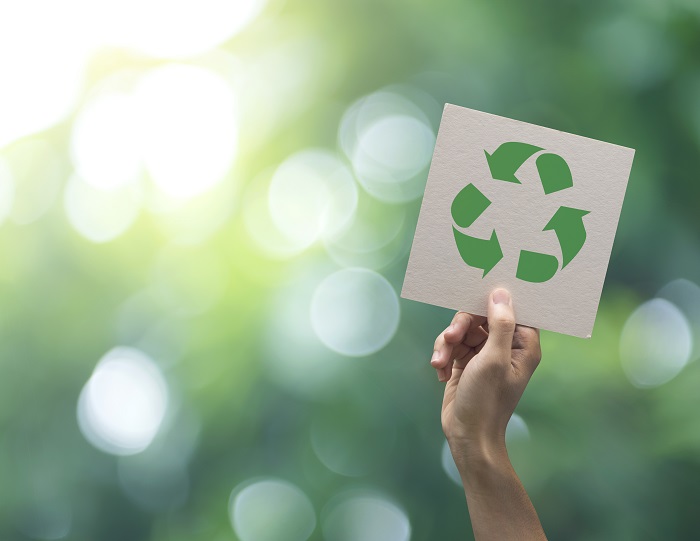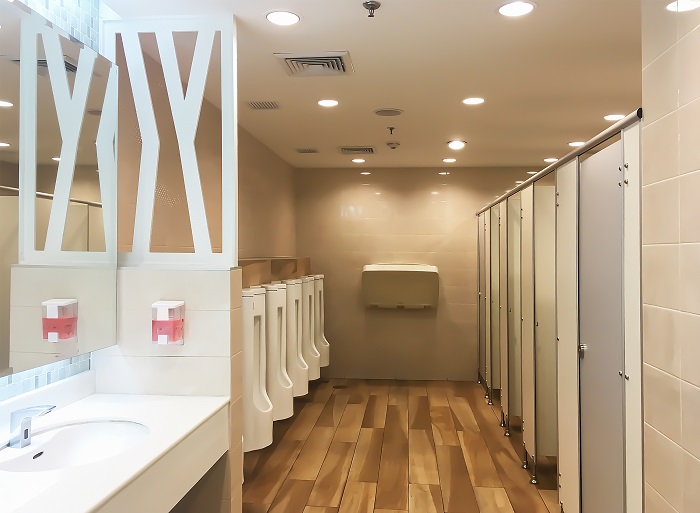In the United States, HDPE is a commonly used plastic. High-density polyethylene or HDPE) is also called polyethylene high-density or PEHD. It is a thermoplastic polymer with a high strength-to-density ratio obtained from the monomer ethylene. This plastic is sturdy, so it can resist bursting and tearing.
Also, it’s an easy-to-recycle plastic polymer in which recycling companies collect and process HDPE products. For recycling purposes, you’ll find HDPE labeled as #2 plastic.

There are many uses of HDPE, and this post will cover these uses.
1. For Plastic Lumber and Furniture
Since this HDPE plastic is durable, strong, and easy to recycle, it’s an ideal material in making plastic furniture and plastic lumber, such as recycled plastic restroom partitions.
If you’re looking for a restroom partition for your home or commercial establishment, you can take HDPE into consideration. HDPE plastic partitions are practical, durable, and easy to install options.
Here are the other products produced made from HDPE plastic:
- Park Furniture: Recycled HDPE plastic can be used to make outdoor park furniture, such as park benches and picnic tables. Park benches and outdoor trash receptacles can be made from HDPE plastic, which are resistant to graffiti.
- Outdoor Furniture: Outdoor furniture, like lawn chairs, uses plastic lumber that is made from recycled HDPE plastic. It’s a scrap plastic well-suited to make outdoor furniture. HDPE is resistant to environmental hazards like heat and cold climate and harsh weather. Outdoor furniture pieces that are made from HDPE are comfortable and exceptionally durable. They come in stylish designs that you can expect from traditional materials.
- HDPE Plastic Deck: With an HDPE plastic, you can build an outdoor deck, patio, or porch that can resist sun, rain, and other environmental elements. Long planks of recycled HDPE plastic are highly durable and weather-resistant. They’re available in different colors, shapes, and profiles. Composite decking is a fantastic example of how recycled HDPE plastic can be transformed into a durable and long-lasting product. Made from a combination of recycled plastic and wood fibers, composite decking materials are eco-friendly alternatives to traditional wood decks without sacrificing aesthetics or functionality. By using recycled HDPE plastic, you can reduce waste and environmental impact while still enjoying a beautiful and functional outdoor living space.
2. For All Sorts of Bottles
The bottles that are usually made from HDPE plastic include shampoo bottles, milk bottles, bleach bottles, detergent bottles, and plasticware. It’s widely used in factories and warehouses because of its great tensile strength.
Also, it’s resistant to harsh and corrosive chemicals. The plastics that were previously used for food leach chemicals. With HDPE bottles, it can be safely used for food contact. It is also easy to sterilize and transparent with other beneficial uses.

Here are the good-to-know facts about HDPE bottles:
- Recycling Rate: Plastic bottles are being recycled all throughout the world. In general, only 6.8 percent of plastics are recycled. With HDPE plastics, 28 percent of milk jugs and water bottles and 12 percent of plastic bags are recycled.
- Landfill Space: Recycling one HDPE plastic bottle would mean saving millions of pounds of plastic from occupying the landfill space.
- Make New Products: HDPE plastic bottles can be recycled to make new products, which saves water, landfill space, energy, and other resources. Also, it reduced pollution, conserving the environment.
3. For Business Use
A plastic-free environment is impossible in business establishments, but less impact can be accomplished with recyclable HDPE plastics. HDPE is a popular plastic-type easily found in many businesses. HDPE plastic supplies and other items are important in keeping business operations running smoothly and cost-effective.
This strong plastic can be used in making everything from drink containers to shampoo bottles. Because this plastic has a lot of uses, there’s a relatively big environmental impact. However, with HDPE, this plastic is recyclable, thus reducing environmental impacts.
Here are the different uses of HDPE plastics in business:
- Containers and drums
- Boxes and Pallets
- Utility Pipes
- Thin-film plastic shopping bags
- Household containers
- Cosmetic containers, such as facial wash, shampoo, and conditioner
- Cleaning product containers like laundry detergent and all-purpose cleaners
4. Other Uses
HDPE plastic can be used to make hardscape materials, such as gardening tools and flower pots. Also, this durable plastic can be used in making floor tiles, crates, sheets, and film plastics. Recycled HDPE is used to make piping, rope, plastic lumber, and recycling bin.
Recycled HDPE plastic has proven to be incredibly versatile, finding applications in everything from construction materials to packaging solutions. One innovative use is pairing recycled HDPE with oversized pallets to create durable and sustainable transport solutions for large, heavy goods.
The HDPE Recycling Process
When it comes to the HDPE recycling process, it starts with a collection. The dirty and clean HDPE plastics separated.
Contaminated HDPE goes through a thorough cleaning process to ensure high quality. Common recycling machinery is used to process HDPE bottles wherein it chews the HDPE plastic in small pieces and forms into pellets.
The plastic pellets are manufactured to make different things, which are combined with virgin HDPE plastics to improve reliability and strength. The color is usually dark, such as black or brown.
How to Melt HDPE Bottles and Jugs to Create New Things
For those who have a knack in creating things out of recyclable materials like HDPE plastics, here’s an easy to use step-by-step guide on how to melt HDPE plastic. With a melted HDPE plastic, you can turn it into something new, like a marble block.
Step 1: Prepare All the Materials and Tools
You’ll need HDPE bottles and jugs and scrap wood (for the plastic mold). Other tools you’ll need are baking paper, clamps, scissors or utility knife, and high-temperature resistant gloves.
Step 2: The Mold
You can melt the HDPE plastic into a block using a simple box. But remember that the accuracy of your HDPE block depends on the accuracy of your mold box. The more accurate the mold box, the better.
Step 3: Cut the HDPE Bottles
It’s easy to distinguish HDPE plastic from other types of plastic because of the number “2” resin identification code.
Before cutting the plastic, remove the labels and wash them from. Use the utility knife to cut away the neck part of the bottles, which are stiff. Once you cut the neck, you also need to cut the base and the handle. Use scissors to cut bigger plastic pieces into smaller ones.
Step 4: Bake It
Each plastic type has a varying melting temperature. Preheat your oven by placing a baking paper onto the baking pan, and place the cut HDPE pieces onto that. Melt the HDPE plastic in the oven at 180°C and check every 10 minutes.
Step 5: The Marble Effect
After about 10 to 15 minutes, the plastic will look sticky, and you can remove it from the oven. To achieve the marble effect, use heat resistant gloves to rotate the HDPE clockwise and then counterclockwise for the colors to blend.
Step 6: Clamp It
Put the HDPE plastic inside the oven and after 10 minutes, take it out and put it inside the wooden mold by clamping it. Come back every five minutes to tighten all the clamps. Remove the HDPE plastic from the oven and let it cool down once you notice the marble effect.
Step 7: The Marble Block
After two hours of cooling down, you’ll notice the shrunk HDPE plastic and the beautiful marble effect, wherein you can see the different colors used.
Conclusion
HDPE plastic can be used to make plastic outdoor furniture, like lawn chairs and playground equipment. Also, this plastic is used as plastic lumber, such as restroom and bathroom partitions. Businesses can also use HDPE plastic for manufacturing plastic bottles and containers for different goods.



